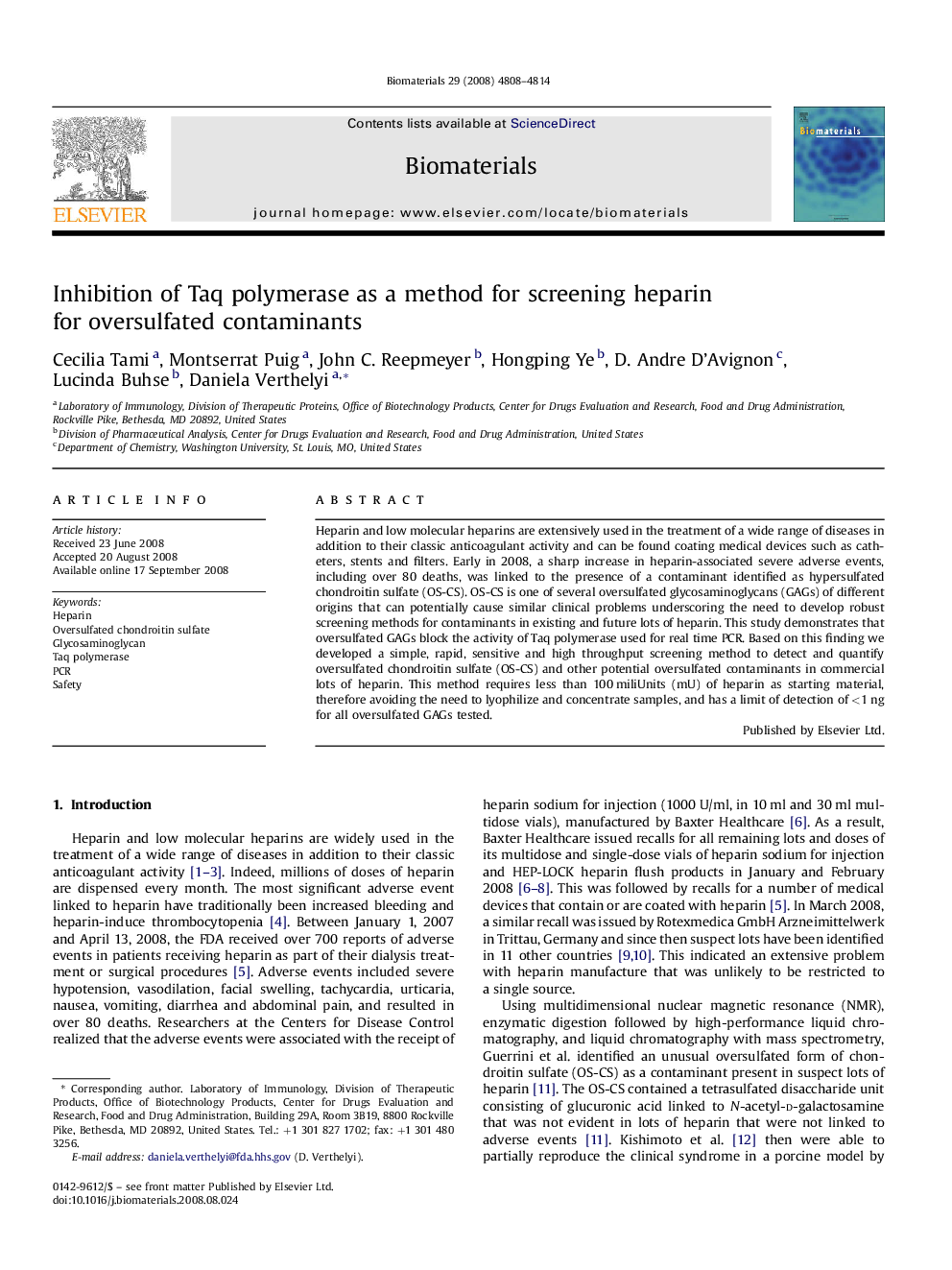| Article ID | Journal | Published Year | Pages | File Type |
|---|---|---|---|---|
| 9072 | Biomaterials | 2008 | 7 Pages |
Heparin and low molecular heparins are extensively used in the treatment of a wide range of diseases in addition to their classic anticoagulant activity and can be found coating medical devices such as catheters, stents and filters. Early in 2008, a sharp increase in heparin-associated severe adverse events, including over 80 deaths, was linked to the presence of a contaminant identified as hypersulfated chondroitin sulfate (OS-CS). OS-CS is one of several oversulfated glycosaminoglycans (GAGs) of different origins that can potentially cause similar clinical problems underscoring the need to develop robust screening methods for contaminants in existing and future lots of heparin. This study demonstrates that oversulfated GAGs block the activity of Taq polymerase used for real time PCR. Based on this finding we developed a simple, rapid, sensitive and high throughput screening method to detect and quantify oversulfated chondroitin sulfate (OS-CS) and other potential oversulfated contaminants in commercial lots of heparin. This method requires less than 100 miliUnits (mU) of heparin as starting material, therefore avoiding the need to lyophilize and concentrate samples, and has a limit of detection of <1 ng for all oversulfated GAGs tested.
